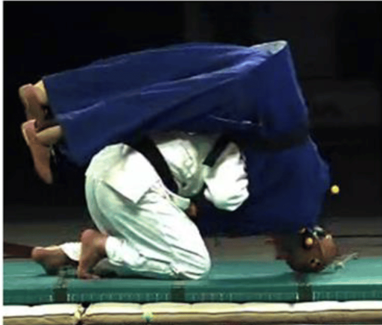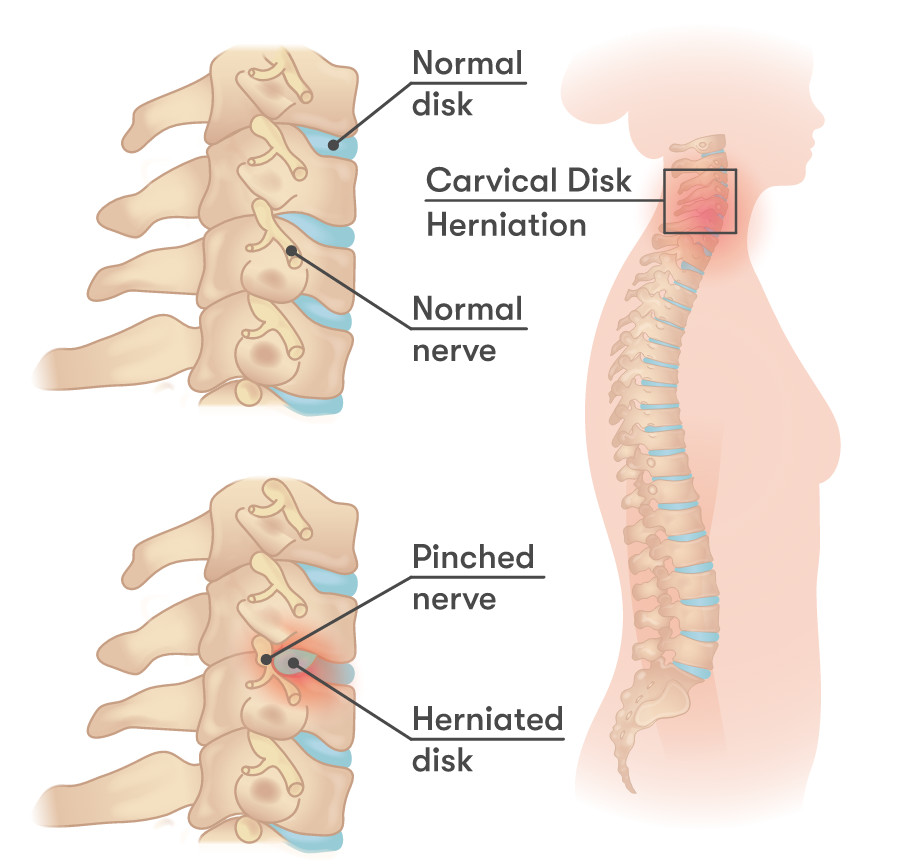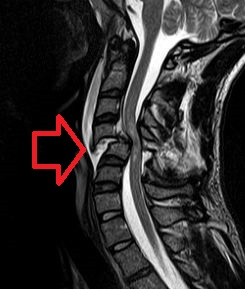Combat sports, including Brazilian Jiu-Jitsu (BJJ), involve intense physical exertion, grappling, and submission holds. Practitioners of combat sports must be aware of the potential risks to their cervical spine. Cervical spine injuries, ranging from minor muscle strain to severe conditions that require surgery can occur due to the intense nature of combat sports. In this article, we will delve into the causes, risks, and prevention of cervical spine injuries, with a specific focus on their occurrence in combat sports, including BJJ.
Continue Reading: 10min Read
Anatomy
The cervical spine, beginning at the base of the skull and comprising the first seven vertebrae, plays a vital role in providing support, mobility, and protection to the neck and spinal cord. The vulnerability of the cervical spine stems from its complex structure, limited muscular protection, and the substantial forces it experiences during combat sports. Moreover, the neck itself is a very sensitive area of the body, housing many vital organs, veins, arteries and structures. On the positive, multiple studies show that cervical injuries are not very common, in fact they range from 2.8 to 4.3% of all injuries in various studies.1,2,3 But despite these injuries being rare, they have the potential for serious harm as they can lead to paralysis, anoxic brain damage, or death.4,5
Types of Injuries
Combat sports involve forceful strikes, throws, takedowns, and slams, which can cause sudden and intense impacts to the cervical spine.6 Hip tosses, foot sweeps and shoulder throws can cause a practitioner to land on their neck and potentially cause injury. Blood chokes and strangulation techniques, such as rear-naked chokes, can impair blood flow to the brain and induce unconsciousness. If these techniques are applied with excessive force or without proper control, they can cause cervical spine injuries, including damage to the vertebral arteries. Moreover, if a choke is not entirely around the neck, this can lead to “neck cranking” (sometimes also referred to as a neck lock, and technically known as a cervical lock). This type of lock causes cervical spine hyperextension, hyperflexion, lateral hyperflexion, hyper rotation or extension-distraction of the neck itself.
As one can gather, there are a lot of different specific injuries that can occur to the neck. Spending adequate time on each type of injury would turn this article into a small book itself, and thus perhaps future articles will dive into these weeds, but for now it’s important to reiterate that the frequency of serious injury to the neck is low. One epidemiological study published in 2017 was able to show the vast majority of injuries to the neck were strains of the muscles, ligaments, or tendons (see table 1).3
Risk Factors for Injury
Insufficient Training or Experience: Lack of proper training, technique mastery, or experience can contribute to increased vulnerability to cervical spine injuries. Beginner practitioners may not possess the necessary control, coordination, or knowledge to protect themselves and their training partners adequately. Evidence supports this as one study showed decreasing prevalence of injury with advancing belt levels in BJJ gyms.3
Age: While this is not a modifiable risk factor, it is worthy to note that as our bodies age they do have functional decline and new limitations. Of particular note, one study did show neck injuries were the more common type of injury in older compared to younger individuals.3
Intensity and Competitiveness: While most injuries happen during training,1-3,7 the competitive nature of combat sports can lead to heightened intensity and an increased risk of severe injuries. One could easily hypothesize athletes, especially amateur athletes, may feel compelled to push their limits or exert excessive force during competitions thus heightening the risk of serious injuries. It seems the literature supports this hypothesis as there is data showing risk of more serious (but not more frequent) injury is higher during competition than in practice.2,7
Prevention Measures
Technique: As stated previously, most injuries occur during training sessions, therefore it is imperative to practice good training habits. Look for gyms that have qualified coaches and practitioners who want others to succeed that emphasize proper technique, body mechanics, and leverage. Engage in controlled and supervised sparring sessions with partners who prioritize safety and proper execution of techniques. Gradually increase the intensity and resistance, while maintaining a focus on controlled movements and minimizing unnecessary risks.
Physical Conditioning: Prehabilitation is a term used in the exercise, athletic, and medical community to signify exercises a person does in order to help prevent and/or reduce the severity of injury. While there has been no high quality study that specifically looks at prehabilitation exercises to prevent cervical spine injuries, there is decent enough data among various sports that focused prehabilitation can reduce injury risk.8,9,10 Given there is low to no risk of prehab exercise, it only goes to reason that including prehab for the neck will help reduce injury risk as well. Again, there is no evidence yet that one type of prehab exercise is better than another, but there are guidelines for MMA and contact sports with decent examples and the purpose is all the same, to not only strengthen the neck and core muscles through specific exercises but to also prepare the neck for the movements and actions required in the sport through increasing and improving flexibility and neuromuscular control, respectively.9,10
Communication and Awareness: Communicate openly with training partners about any discomfort, pain, or limitations to avoid exacerbating existing injuries or developing new ones. Tap early and tap often is a saying that is repeatedly used in a lot of gyms. We’d also like to plug that if you and your partner say you are going to roll at 50 or 70% intensity, do it. Don’t let your ego crank it to 100% after your guard gets unexpectedly passed. Instead, think about what happened, and what your next move is. Combat sports are referred to as physical chess for a reason.
Conclusion
Conclusion
Cervical spine injuries are a potential risk in combat sports, including Brazilian Jiu-Jitsu, due to the physical nature of these activities. By understanding the causes and risks associated with cervical spine injuries and implementing preventive measures, practitioners can minimize their chances of sustaining such injuries. Mastery of proper technique, controlled training, physical conditioning, and effective communication, are essential for reducing the risk of cervical spine injuries.
References
- Nicolini AP, Penna NA, Oliveira GT, Cohen M. Epidemiology of orthopedic injuries in jiu-jitsu athlestes. Acta Ortop Bras. 2021 Jan-Feb;29(1):49-53. doi: 10.1590/1413-785220212901236466. PMID: 33795970
- Scoggin JF 3rd, Brusovanik G, Izuka BH, Zandee van Rilland E, Geling O, Tokumura S. Assessment of Injuries During Brazilian Jiu-Jitsu Competition. Orthop J Sports Med. 2014 Feb 21;2(2):2325967114522184. doi: 10.1177/2325967114522184. PMID: 26535299.
- McDonald AR, Murdock FA Jr, McDonald JA, Wolf CJ. Prevalence of Injuries during Brazilian Jiu-Jitsu Training. Sports (Basel). 2017 Jun 12;5(2):39. doi: 10.3390/sports5020039. PMID: 29910398.
- Joseph Ifrach, Nathaniel B. Neavling, Steven S. Yocom, Daniel A. Tonetti, Cervical spine Flexion-Distraction fracture in a Brazilian Jiu-Jitsu athlete: A case report and literature review, Interdisciplinary Neurosurgery, Volume 30, 2022, ISSN 2214-7519, https://doi.org/10.1016/j.inat.2022.101640
- BJJ White Belt, Left Paralyzed By Coach During Class, Awarded $46 Million By The Jury.” | Bjj Eastern Europe, 31 March 2023, Accessed 4 Sept 2023.
- Kochhar T, Back DL, Mann B, Skinner J. Risk of cervical injuries in mixed martial arts. Br J Sports Med. 2005 Jul;39(7):444-7. doi: 10.1136/bjsm.2004.011270. PMID: 15976168.
- Stephenson C, Rossheim ME. Brazilian Jiu Jitsu, Judo, and Mixed Martial Arts Injuries Presenting to United States Emergency Departments, 2008-2015. J Prim Prev. 2018 Oct;39(5):421-435. doi: 10.1007/s10935-018-0518-7. PMID: 30043324.
- Sewry N, Verhagen E, Lambert M, van Mechelen W, Viljoen W, Readhead C, Brown J. Exercise-Based Interventions for Injury Prevention in Tackle Collision Ball Sports: A Systematic Review. Sports Med. 2017 Sep;47(9):1847-1857. doi: 10.1007/s40279-017-0704-4. PMID: 28247331.
- Tack, Chris BSc (Hons). Evidence-Based Guidelines for Strength and Conditioning in Mixed Martial Arts. Strength and Conditioning Journal 35(5):p 79-92, October 2013. DOI: 10.1519/SSC.0b013e3182a62fef
- Meir, Rudi MA, CSCS, *D; Diesel, Wayne PhD; Archer, Ed FTST. Developing a Prehabilitation Program in a Collision Sport: A Model Developed Within English Premiership Rugby Union Football. Strength and Conditioning Journal 29(3):p 50-62, June 2007.
- Figure 1 courtesy of creative common license from Nakanishi T, Hitosugi M, Murayama H, Takeda A, Motozawa Y, Ogino M, Koyama K. Biomechanical Analysis of Serious Neck Injuries Resulting from Judo. Healthcare. 2021; 9(2):214. https://doi.org/10.3390/healthcare9020214
- Figure 2 courtesy of creative common license, accessed at https://commons.wikimedia.org/wiki/File:Cervical_Spine_Computer_Generated_Image.png
- Figure 3 courtesy of injury map, accessed at https://www.injurymap.com/free-human-anatomy-illustrations
- Figure 4 courtesy of creative common license, accessed at https://en.wikipedia.org/wiki/Spinal_cord_injury#/media/File:Cervical_Spine_MRI_(T2W).jpg








Recent Comments